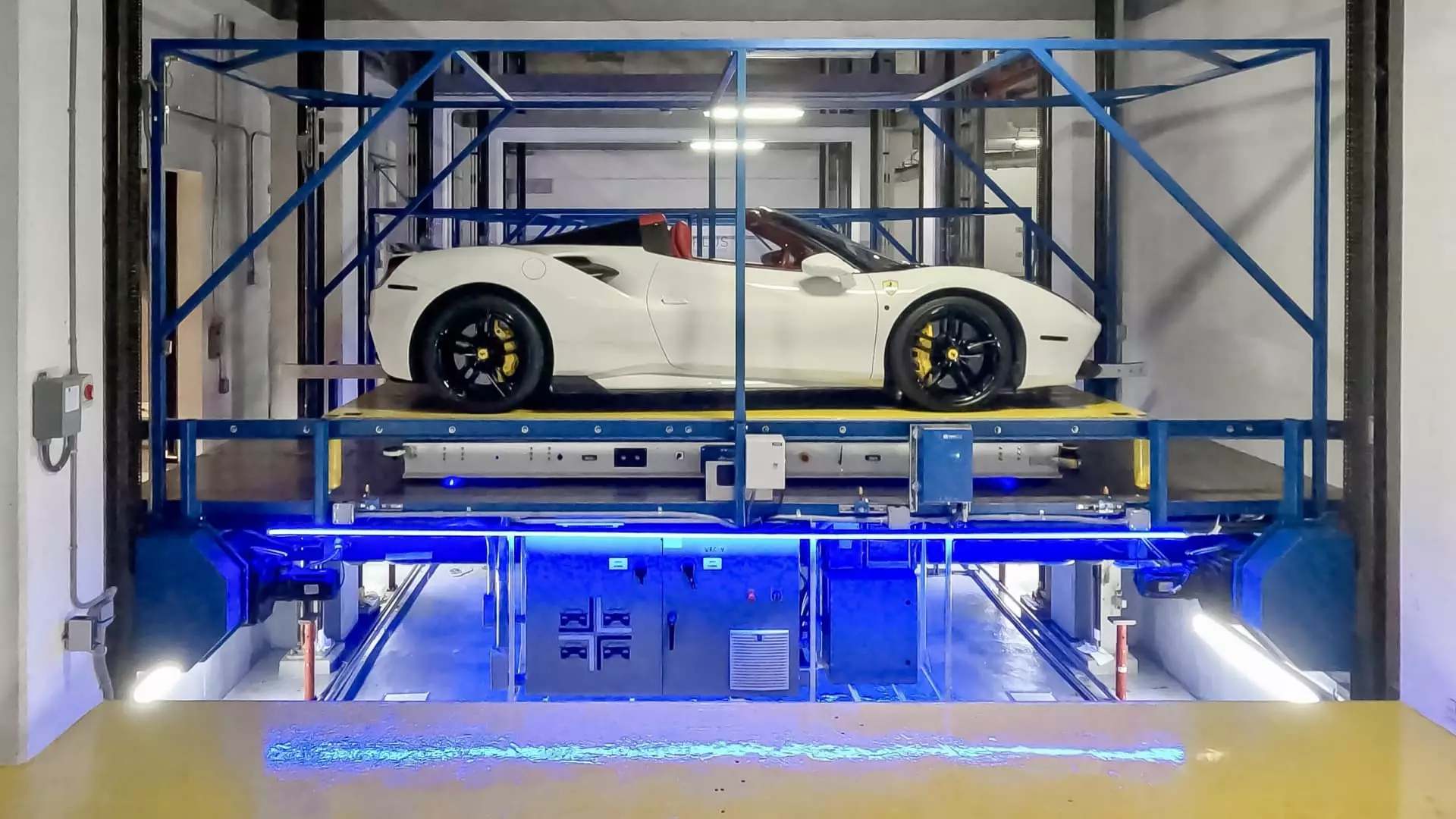As cities evolve into bustling hubs of activity, urban developers are continually seeking innovative solutions to accommodate rising populations and vehicle ownership. In Miami, a striking example of this emerging trend can be found within the 46-story Brickell House condominium, which boasts the largest and tallest automated parking facility in the United States. Here, cutting-edge technology meets luxury living, allowing residents to forego the often tedious and time-consuming task of parking. Instead, they are greeted by a fleet of robots that autonomously transport vehicles to their designated spots, transforming the concept of parking into a seamless experience.
The Brickell House garage is an intricate mechanical masterpiece spanning 13 levels and powered by an array of advanced technologies. With five car lifts and an assortment of lasers and embedded bar codes, this facility is a showcase of automated efficiency. Once residents drive their vehicles into one of the garage’s five bays, the parking task becomes the responsibility of automated guidance vehicles (AGVs), which operate tirelessly around the clock. These AGVs are designed to navigate the garage autonomously, equipped with vision systems and powerful lifting capabilities to deliver parking solutions with remarkable precision.
The garage is a marvel of engineering, wherein these robots are able to transport cars weighing up to 6,000 pounds, squeezing them into spots with only two inches of clearance on either side. The process not only enhances convenience for residents but also maximizes available parking space, ensuring that every inch of the garage is utilized to its fullest potential.
Automated parking facilities are becoming increasingly popular in high-end real estate markets across cities such as New York, San Francisco, and Miami. However, such luxurious features do come at a cost. A prime parking spot in a luxury condominium may start at an eye-watering $300,000, while properties like the Brickell House are marketed with parking structures that can range from $8 million to $32 million to develop.
Despite the significant financial investment, developers and real estate agents tout automated parking as a wise investment. The ability to optimize square footage is a significant incentive—eliminating the need for traditional ramps and spacious driving lanes allows developers to offer more residential units in the same footprint, potentially increasing overall property value.
The ascent of automated parking systems is just one facet of the broader smart parking market, which has experienced remarkable growth in recent years. According to Grand View Research, this sector was valued at approximately $6.5 billion in 2021, with projections estimating acceleration to $30.16 billion by 2030, especially in North America. This surge is largely driven by the increasing demand for luxurious urban living and innovative solutions to meet evolving parking needs.
As competition heats up within the luxury condominium market, developers are increasingly inclined to invest in features that promise to differentiate their offerings. The high-tech parking system at Brickell House epitomizes how modern conveniences are rapidly becoming essential for prospective buyers seeking to invest in urban real estate.
Of course, technological advancements are not without their hurdles. While the automated system at Brickell House offers an innovative solution to the common problems of urban parking, the journey toward perfection is not always smooth. For instance, the building’s former parking setup faced scrutiny due to malfunctions that left residents’ vehicles trapped and the garage inoperable for years. The resulting legal battles underscore the critical importance of reliability in such systems.
Despite previous setbacks, industry representatives like Paul Bates of ParkPlus believe the advancement of automated technology represents an opportunity for healing and improvement. By addressing past failures directly, they can deploy new systems with an emphasis on reliability and risk mitigation, fostering trust from both developers and residents.
As the real estate landscape continues to shift, the rise of automated parking systems reflects a broader transformation within urban living environments. The Brickell House stands as a testament to how innovation can reshape lifestyle conveniences in our densely populated cities. Ultimately, the integration of smart technology offers not only a glimpse into the future of parking but also a compelling case for the continued evolution of luxury living in urban spaces. While challenges remain, the journey toward effective automated solutions heralds a new era for both developers and city dwellers alike.

